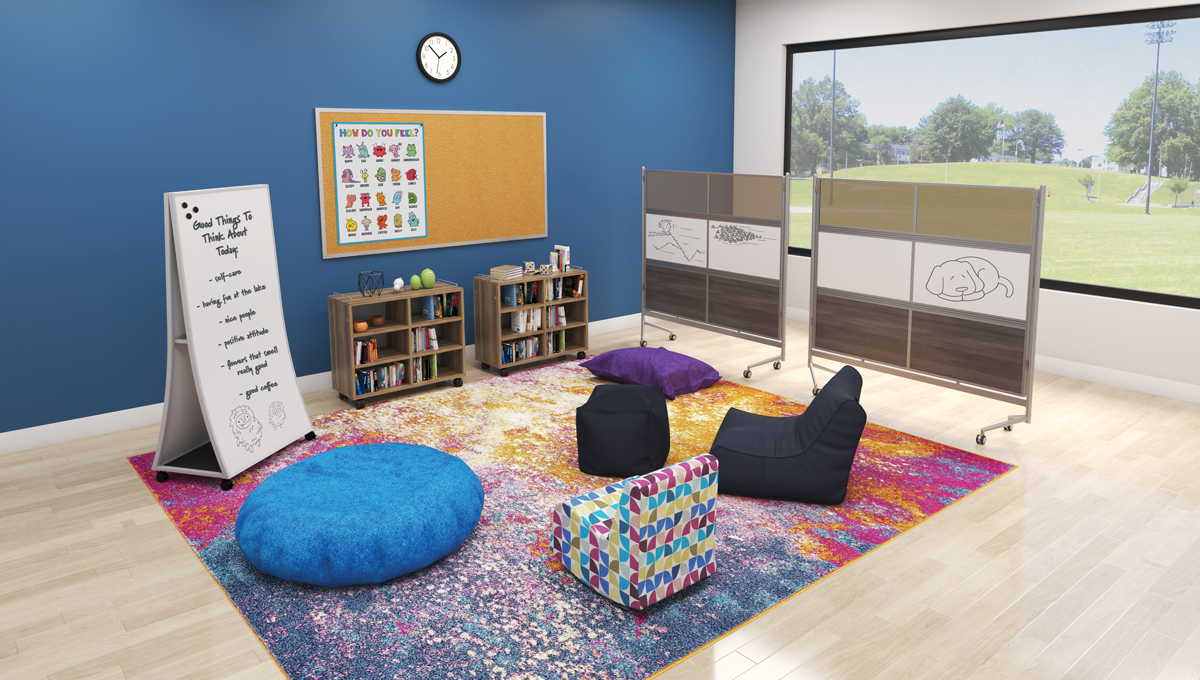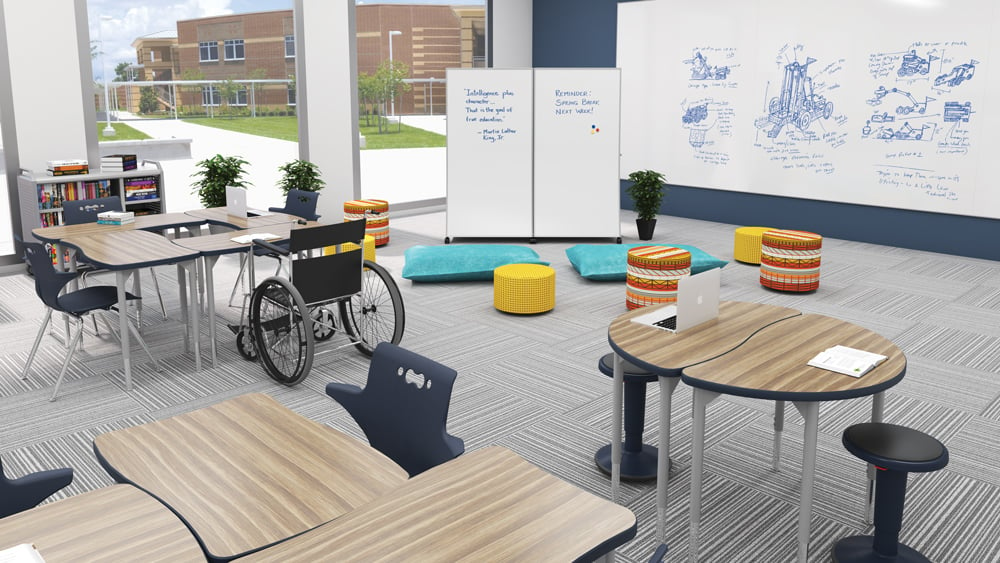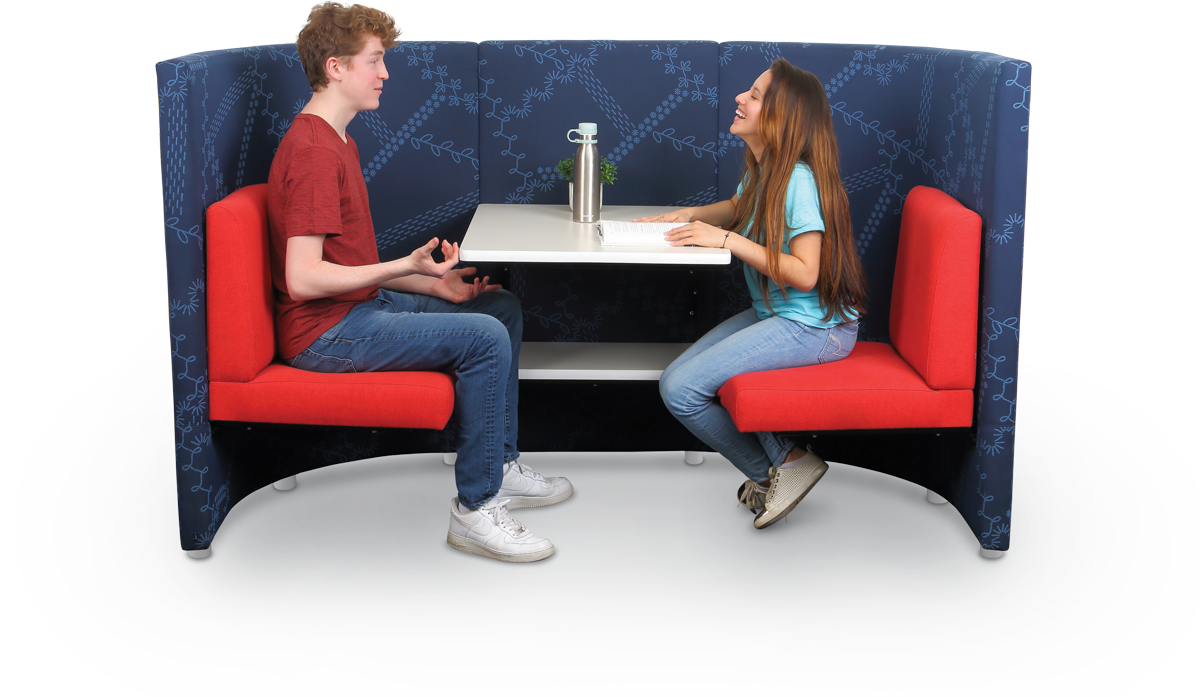How Can We Prioritize Mental Health in Gen Z Classrooms?
Posted by MooreCo Inc on May 12, 2022 12:54:11 PM
How Can We Prioritize Mental Health in Gen Z Classrooms?
At the tail-end of a two-year-long global pandemic, students are under more stress than ever before. The pandemic alone has massively affected their mental health as students make the switch to remote learning and continue schoolwork under these conditions. Not only were they forced to consider their futures while they were simultaneously unsure what the future held, but students also identified other global issues that had an impact on their mental health in the latest APA Stress in America Survey. Students today are stressed over issues like discrimination and harassment, the separation and deportation of migrant and immigrant families, mass shootings, political climate, hunger or food insecurities, work, and money, to name a few.
According to Reuters, “A whopping 91% of Gen Z said they experienced physical or emotional symptoms due to stress and mental illness in the past year” (Leo, 2022). If you are a teacher, it is likely you will encounter students with mental illness in the classroom. And, if you are a teacher, it is likely that you have undergone your own mental health struggles over the last two years, as you were also put under immense stress. Introducing strategies for improving mental health in the classroom for both students and teachers is vital in a post-pandemic world.

Use Positive Reinforcement
One of several ways to work with students while keeping mental health as a focus is using positive reinforcement and verbal praise, making accommodations to encourage student excellence, and ensuring students have access to resources that address their individual needs. The Center for Disease Control (CDC) reported that “44.2% of students experienced persistent feelings of sadness or hopelessness” during the pandemic. Empowering student individuality and rewarding engagement with verbal praise can improve feelings of confidence and belonging in the classroom.
Students should be able to come to school with curious and hopeful hearts, which is only possible when the classroom is a safe space. Making sure that the classroom is a healthy environment that rewards individual contribution goes a long way. Some schools have installed “Emotion Walls,” prompting kids to write down positive affirmations, notes, or an inspiring word on the wall before class. Teachers are the first line of defense when it comes to making students feel they are a welcome and important part of their classroom community. Taking the time to write an encouraging note on a student’s dry-erase tabletop desk would be a great way to engage with shy kids. Encouraging students to excel and rewarding them with verbal praise is an easy way to set the standard for communication in the classroom.

Create an Inclusive Classroom
The CDC reported that mental health decline during the pandemic was most prevalent among LGBTQ+ and BIPOC students. Since school is sometimes the only source of mental health services that students have access to, the transition to remote learning created a serious barrier to student prioritization of mental health. Losing those vital mental health resources meant higher and more persistent feelings of sadness and hopelessness among marginalized student communities during the pandemic. Teachers can combat these statistics by creating a classroom environment that is inclusive and respectful of every single student.
Welcoming individual opinions and allowing open discussion cultivates a safe environment where students know that they belong and that their contributions matter. Create a communal area with soft seating like our Beanies to encourage peer conversation, and make sure to include ADA-accessible furniture like Hierarchy Creator Desks. Teachers should be aware of the language they choose to use in the classroom to better communicate with students in a meaningful way. Including multicultural literature in lessons is a great way to help students feel connected to the material and create cross-cultural understanding between peers.

Talk About Mental Health in the Classroom
Taking classes on how to talk about mental health in the classroom is a practical way to learn about approaching different student needs. Every kid is unique and comes with their own back story. Staying curious and open-minded allows teachers to create a safe space where students feel comfortable talking about mental health. They already want to—according to the latest APA Stress in America Survey, “Gen Zers are 27% more likely to report their mental health as poor than other generations, compared to 15% of millennials and 13% of Gen Xers.”
Teachers can take classes on how to create a space that encourages this behavior among students, so they ultimately feel comfortable speaking up about their struggles when they need help. Engaging with students individually helps teachers find a deeper understanding of any ongoing issues and allows students to feel personally cared for. Install Double Privacy Pods for one-on-one connection, and allow kids with anxiety to feel calm in the subtle sway of our Rocking Chair or Rocking Stool. Teachers should also consider improving their own mental health to serve as a good example to their students.
Topics: Covid-19, Well-being, mental health, Educators
